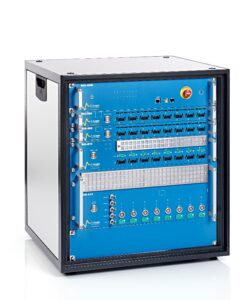While doing research on batteries an essential process is battery screening. This can practically done at every level of the battery value chain ranging from R&D to second life experiments. At the R&D phase screening can be used to select and validate the best battery chemistries. But screening can be used in many more applications such as, selecting the right batteries for specific applications and to validate pilot studies.
The most common electrical testing technique used in the battery screening is charge/discharge experiments. During these experiments different parameters are measured and/or calculated in order to estimate their evolution prior to a later evaluation.
The screening process consists of multiple tests, beginning with a large number of simple battery tests. With these tests, for example, Capacity and internal resistance vs cycles are measured on multiple batteries using low-cost instruments or battery cyclers. when the best batteries are selected, they can undergo more advanced testing, such as, EIS or dQ/dV. To do these kind of advance testing you will need a more expensive measurement instruments such as a potentiostat.
But what if both the simple tests as well as the advanced tests can be carried out on the same instruments during the same test? Imagine how this will increase the efficiency of your experiments in terms of time and money…
Basic measurements and advanced EIS screening: Bringing it all together…
Electrochemical Impedance Spectroscopy (EIS) is a fast, non-intrusive measurement that give access to a huge amount of battery information. Running both standard and advanced measurements such as EIS on the same instrument will help save you a lot of time and money. The Biologic BCS-800 series offers you the possibility of doing both measurements at the same time with one instruments, thanks to the EIS capabilities of the system. Carrying out experiments on the same battery, simultaneously, will increase the efficiency in technical terms as well as it is increasing the workflow significantly.
Furthermore, even if the data is not used initially, EIS spectra can be studied at a later date allowing additional characterization if needed. From simple to advanced measurements, everything can be carried out on the same cycler, at the same time. This gives users options to carry out advanced analyses, at a later date, without having to carry out a second set of measurements on a more advanced instrument.
Reduced lead time and increased efficiency for battery screening
The Biologic BCS-800 series is a modular battery testing system designed to meet the needs of users working at every level of the battery value chain, from R&D to pilot production and from production testing to quality control. The battery testers are made up of three modules (BCS-805, 810 and 815). All of the modules offers 8 independent channels with a maximum current of ±150 mA, ± 1.5 A and ±15 A (up to 120 A in parallel), respectively per channel. With the optional FRA (Frequency Response Analyzer) module, the BCS-800 series is capable of doing EIS experiments in the frequency range of 10 kHz to 10 mHz on each channel. These EIS experiments can be done in both potentiostatic and galvanostatic mode. Because of the high accuracy for both control and measurement the BCS-800 series is ideal for performing challenging experiments such as dQ/dV measurements.
Conclusion
The Biologic BCS-800 series battery cycler will give you all the possibilities of doing battery screening, without the need of having multiple instruments. Due to the built-in FRA module and the high accuracy you can do both the simple tests as well as the more advanced test on one single instrument.

Biologic BCS-800 series battery cycler
